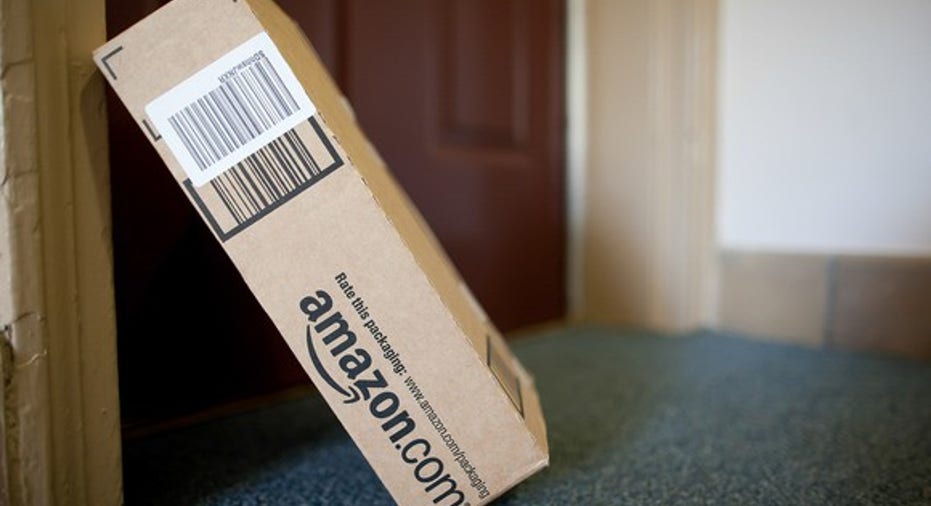How Big Are Amazon.com's Cash Flows Really?

Image source: The Motley Fool.
Amazon.com (NASDAQ: AMZN) stock has been firing on all cylinders lately. Shares of the online retail juggernaut have gained over 45% in the past year on the back of booming revenue growth and expanding free cash flow. However, investors should closely scrutinize Amazon's cash flows metrics, since free cash flow is significantly overstating the company's cash flow generation capabilities.
Amazon's free cash flow is distorted
Amazon invests tons of money in assets such as servers to operate its Amazon Web Services cloud computing business. Instead of purchasing those servers, the company mostly uses capital leases. This financing strategy makes a lot of sense for multiple reasons, but it can also make the cash flow statement more obscure for investors who aren't paying enough attention to the details.
What Amazon is doing in this area is completely in line with accounting regulations, and the company provides all the necessary information to measure and analyze its cash flows. Nevertheless, traditional free cash flow, one of the most popular and followed indicators of financial strength, isn't telling us all we need to know about Amazon's cash-flow generation.
Let's assume that Amazon is purchasing those servers, as opposed to financing them via capital leases. The money to pay for those assets would be included in "purchase of property plant and equipment" in the cash-flow statement. This item is deducted from operating cash flow to obtain free cash flow, so in this example, free cash flow would take into account the cash invested in servers.
On the other hand, when using capital leases, the asset is financed by the seller. Amazon includes the server on its assets, and it also books a liability for the lease payment obligations. However, cash payments for the lease are not included in free cash flow. The original lease transaction is included in "supplemental cash flow information," while regular lease payments are accounted for in "cash flow from financing activities."
In a nutshell, capital leases are a significant cash outflow for Amazon, and the company needs to make big investments in servers and similar assets on a regular basis. These outflows are properly accounted for and included in the cash flow statement, but you won't find them in traditional free cash flow metrics.
How big are Amazon's cash flows really?
Looking at Amazon's investor presentation for the second quarter of 2016, we can start with traditional free cash flow metrics. Amazon defines free cash flow as cash flow from operations less capital expenditures in purchases of property and equipment, including internal-use software and website development expenses.
Interestingly, management explicitly says that Amazon is focused on increasing free cash flow over the long term. From this perspective, using leases as opposed to purchasing assets can be a valid and smart strategy to maximize free cash flow. From Amazon's annual report for 2015: "Our financial focus is on long-term, sustainable growth in free cash flows per share. Free cash flows are driven primarily by increasing operating income and efficiently managing working capital and cash capital expenditures, including our decision to purchase or lease property and equipment."
Free cash flow during the 12 months period ended in the second quarter of 2016 amounted to $7.3 billion, a big 68% year-over-year increase.
Image source: Amazon.com.
Free cash flow less lease principal repayments is obtained by calculating free cash flow and then deducting "principal repayments of capital lease obligations" and "principalrepayments of finance lease obligations," which are both included in cash flow from financing activities in the cash-flow statement. This metric measures free cash flow adjusted for the actual cash payments Amazon is making for its leases.
Free cash flow less lease principal repayments was $3.9 billion during the year ended June. 30, growing 65% versus the same period in the prior year.
Image source: Amazon.com.
We can also look at free cash flow less finance lease principal repayments and assets acquired under capital leases. This metric basically shows free cash flows assuming that Amazon is purchasing those assets instead of leasing them.
Free cash flow less finance lease principal repayments and assets acquired under capital leases was $2.5 billion during the 12 months period ended in the second quarter -- a significant improvement versus a negative $492 million in the same period one year ago.
Image source: Amazon.com.
The different cash-flow metrics from Amazon are all moving in the right direction at an impressive speed. However, free cash flow is reduced from $7.3 billion to $3.9 billion, and then to $2.5 billion when deducting different cash outflows related to leases. This is quite a material difference, and investors would be wise to keep it in mind when looking at Amazon's cash flows.
A secret billion-dollar stock opportunity The world's biggest tech company forgot to show you something, but a few Wall Street analysts and the Fool didn't miss a beat: There's a small company that's powering their brand-new gadgets and the coming revolution in technology. And we think its stock price has nearly unlimited room to run for early in-the-know investors! To be one of them, just click here.
Andrs Cardenal owns shares of Amazon.com. The Motley Fool owns shares of and recommends Amazon.com. Try any of our Foolish newsletter services free for 30 days. We Fools may not all hold the same opinions, but we all believe that considering a diverse range of insights makes us better investors. The Motley Fool has a disclosure policy.